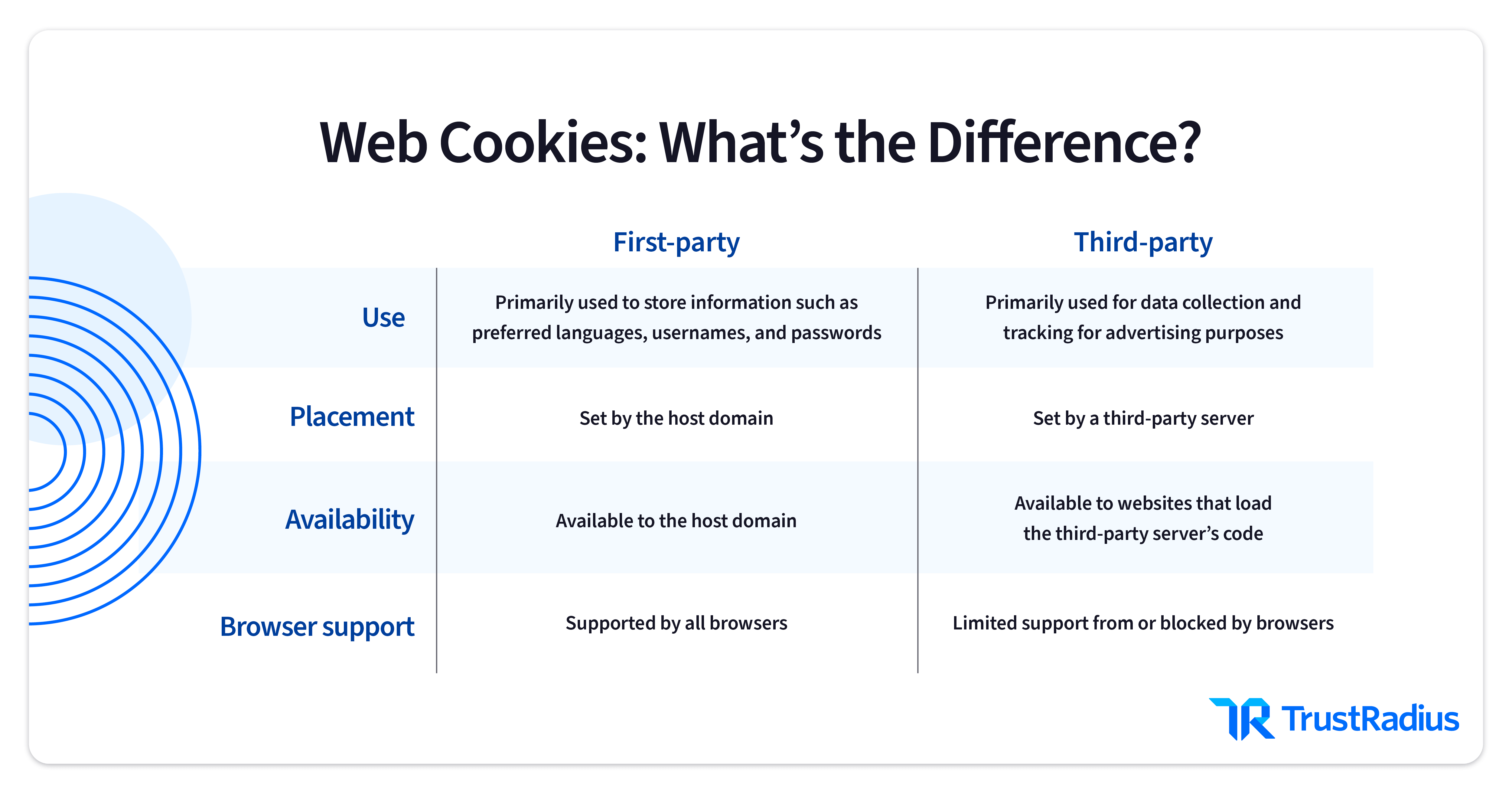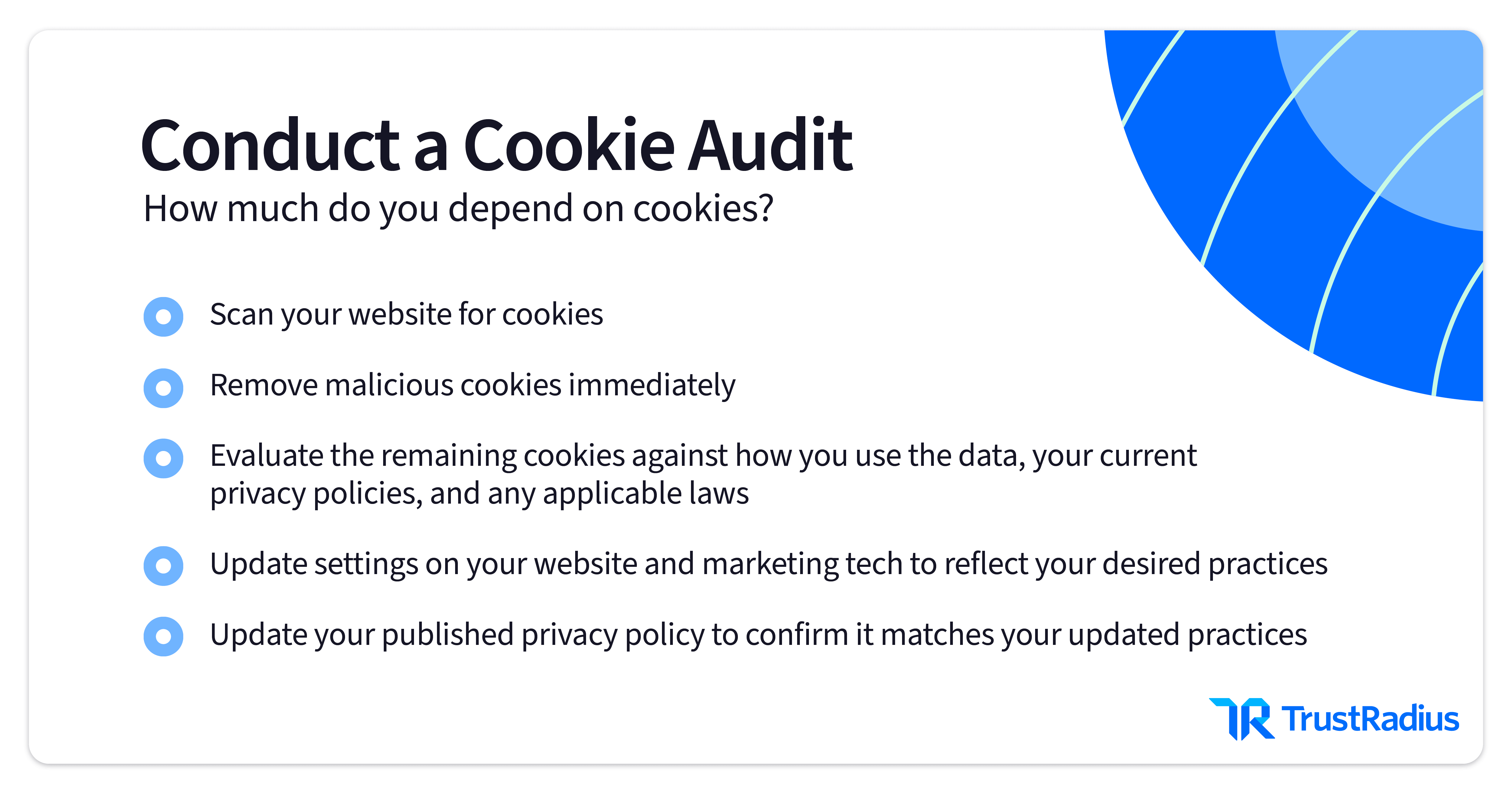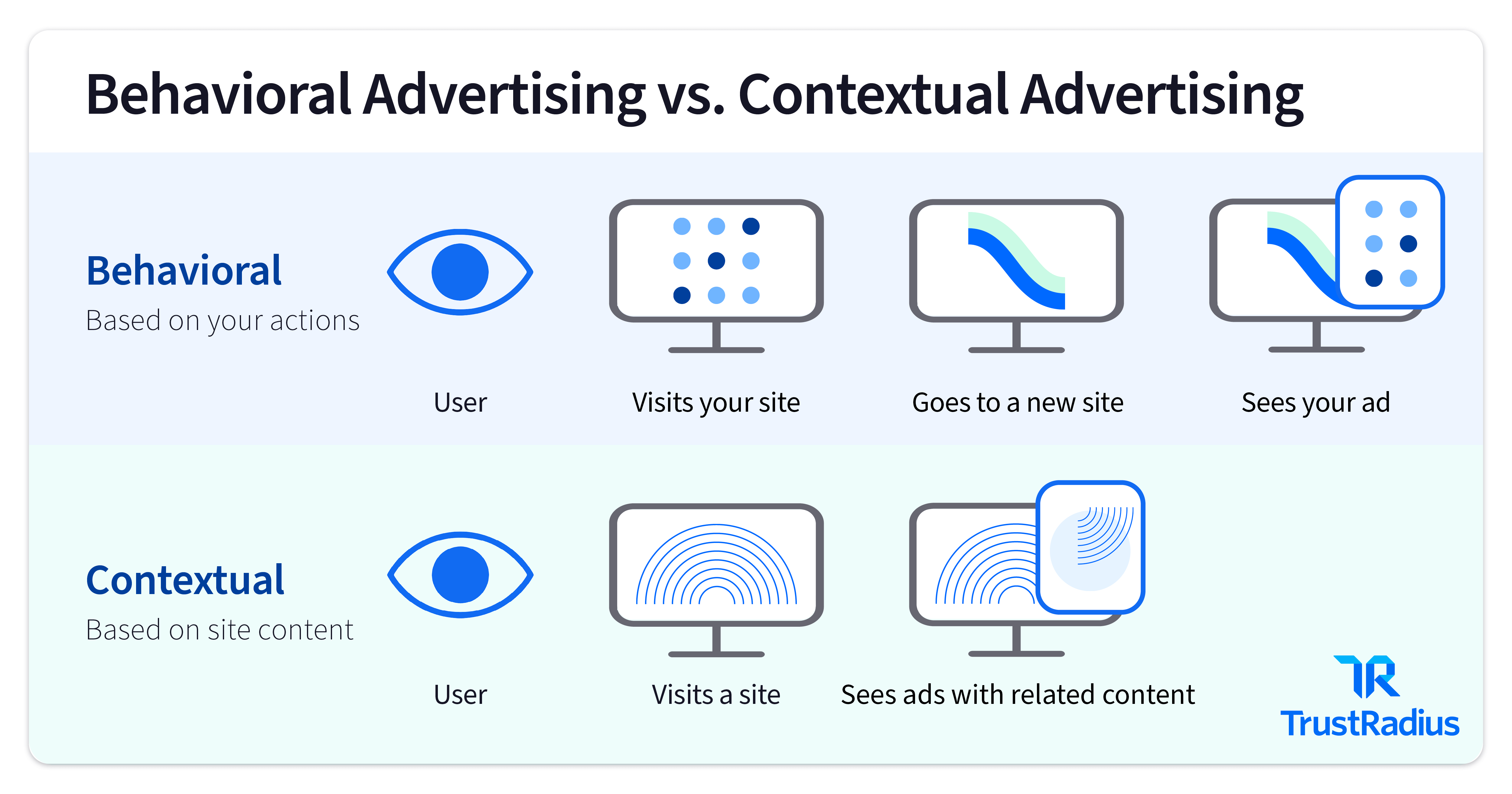The Cookieless Future: Separating Truth from Fiction
From their modest beginnings nearly 30 years ago, browser cookies have become a normal part of our online lives. But what started as a solution to improve the online user experience has become a privacy concern for many — and the digital landscape is evolving to be what is often described as a “cookieless future.”
The reality is more nuanced than that phrase suggests — it’s third-party cookies that have come under fire by privacy advocates. First-party cookies will continue to play a core role in digital marketing. That doesn’t mean you can ignore the change, though. While this shift has been on the minds of digital marketers for several years, it’s now critical to move past the fear of the unknown, make sure you understand the changes underway, and develop a strategy to adapt to that new reality.
The elimination of third-party cookies will undoubtedly create opportunities for brands to find new ways to connect with and earn the trust of their core audience while also improving brand engagement. Voluntary data disclosure and other alternatives for third-party cookies have already increased in popularity.
So, how do marketers who have become reliant on this data adapt to the death of the third-party cookie? The future will be about building trust, earning voluntary disclosure, and intelligent use of intent data from a variety of sources. No more shortcuts or band-aid fixes.
Why Were Third-Party Cookies So Important?
To understand why marketers are so anxious about third-party cookies going away, it’s crucial to understand why they were important in the first place.
In the mid-1990s, cookies were developed as a way to make surfing the Internet a little more convenient. As you were browsing the web, a small text file was stored in your browser, collecting data about your preferences and online behavior. This data, which could include your name, physical location, previously visited websites, and contents of your shopping carts, was initially used to personalize your web browsing experience. It was a benefit to the consumer!
Over time, marketers began using third-party cookies to track users and their online behavior to better target ads to them. Cookies provided a mechanism to deliver highly relevant advertising content to engaged users with a higher return on ad spend (ROAS).
Cookies’ functions have become more complex over time, now capturing and storing personally identifiable information (PII) collected by users from online forms, such as registrations and e-commerce purchases. Additionally, cookies store ad tracking information by collecting more data about a user each time a cookie is delivered.
As the amount and type of data being collected continued to expand, some privacy advocates began to ask if perhaps those data collection tactics had gone too far. In response, regulations have been adopted to give users more control over their data and how it is collected. The European Union’s General Data Protection Regulation (GDPR) and the California Consumer Privacy Act (CCPA) are two examples of privacy laws aimed at protecting individual rights regarding data.
GDPR went into effect in 2018 as one of the first major data protection and privacy regulations to address modern online privacy concerns, helping pave the way for additional regulation across the world. The regulation unites data privacy laws across all EU member states and applies to any business or individual conducting business with any EU citizen. GDPR was founded on seven key principles that guide businesses to comply with new data protection standards:
- Lawfulness, fairness, and transparency. Legal data collection must be used fairly and be clearly explained by organizations processing the data.
- Purpose limitation. The purpose of the data collection must be clear and consent-based.
- Data minimization. Only collect data that is required for the intended purpose.
- Accuracy. The data must be kept reasonably up to date.
- Storage limitation. The data shouldn’t be kept longer than needed.
- Integrity and confidentiality. Security measures must be in place to protect the data.
- Accountability. The organization must be responsible for how they collect and handle data, ensuring it complies with GDPR.
Two years after GDPR went into effect, the California Consumer Privacy Act followed in its footsteps, further expanding consumer privacy rights and protection. CCPA primarily focuses on access, user control, protection, and non-discrimination. This allows California citizens the right to know what information is being collected, if that information is being shared, and to whom. It also gives consumers the right to deny the sale of personal information and the ability to access and delete their personal information.
While these are just two examples of recent regulations, numerous others have been adopted throughout the world in recent years. As online behavior continues to evolve it’s reasonable to expect additional regulatory updates in the future, even as companies and individuals continue to move toward a more privacy-centric online experience.
First-Party vs. Third-Party Cookies
Once you understand how cookies work, it’s also important to understand the different types of cookies out there, particularly the difference between first- and third-party cookies.
First-party cookies are stored directly on the website a user is visiting. This allows the website to collect data to improve the user experience and store relevant information that is voluntarily provided by users. Login information and items placed in a shopping cart are both examples of common first-party cookie data.
Because of the direct relationship between the user and the website, first-party cookies are inherently viewed as a mutually-beneficial agreement. This allows first-party cookies to avoid much of the controversy of their third-party counterparts.
Third-party cookies, as the name implies, are created by an outside source and set on the website by third-party servers to track users across multiple websites. In general, third-party cookies focus on tracking users and serving ads tailored to those users.
While some third-party cookies have consumer functionality, such as payment services, others are often left on browsers without consumer knowledge or direct consent. This is a core argument for many privacy advocates and a significant reason for the current phase-out of third-party cookies.

What Will the End of Third-Party Cookies Mean?
For some consumers and privacy advocates, the end of third-party cookies is a positive step towards data privacy. Many businesses that have relied on this data for their marketing will need to pivot, while those that have been honing customer-centric website experiences will likely gain a competitive advantage. For marketers, it can be an opportunity to build trusting relationships while developing new, privacy-focused targeting capabilities.
The End of Third-Party Cookies for Users
For users, this phaseout will minimize unconsented data collection and personalized marketing tactics. Visitors can trust that websites don’t have third-party sources constantly collecting information with every webpage they access.
Consumers generally trust first-party cookies more than they do third-party cookies. First-party cookies still enable websites to provide a quality user experience for each individual across a site while maintaining user privacy.
The End of Third-Party Cookies for B2B Marketers
Though this is one of the biggest changes to digital advertising to date, brands don’t need to panic.
As the ad tech industry and regulations evolve to meet consumer expectations for privacy, new opportunities for audience engagement and targeting will continue to emerge.
Brands can also expand their own first-party data with tactics for voluntary data disclosure, such as gated content and surveys. This allows for a more natural opt-in approach to marketing and advertising that establishes trusted relationships.
Is the Cookie Era Really Coming to an End?
The phaseout of third-party cookies isn’t exactly new. Search engine browsers like Safari and Firefox have blocked third-party cookies by default for years. In 2020, Google announced it too would move toward no longer supporting third-party cookies in Chrome, which handles more than half of all web traffic. Cookie removal in Chrome will all but spell the end of the third-party cookie era.
Since the announcement, however, Google has extended the third-party cookie’s deadline to late 2023. This delay shifts Google’s original timeline by nearly two years, giving more time for brands and the industry as a whole, to work with regulators and develop alternatives for implementing the cookieless future.
Even with delays in the shift to the cookieless future by Google, third-party cookie removal appears to be inevitable. Growing consumer privacy demands and new regulations across the world are early indications of the need for a different approach to collecting, storing, and activating customer data.
How Marketers Can Prepare for a Cookieless Future
If you find the thought of addressing these changes to cookies overwhelming, you’re not alone. Here’s how you can get started.
Audit Your Customer Data Collection Practices
First-party data will be critical moving forward, and your first step as a digital marketer should be to conduct an audit to determine what data you’re currently gathering via cookies. A few key places to look:
- Your own website.
- Any ad tech or ABM platforms you – or your agency – rely on.
- The ad networks themselves.

Analyze Your First-Party Data Collection
After completing your audit, it’s important to think about how you can do more with the first-party data you are collecting.
Analyzing web traffic and creating audiences based on interest in topics, products, or services allows brands to create a personalized experience for users.
You can use this first-party intent data to identify in-market buyers and prioritize high-value audiences effectively without relying on third-party cookies.
By creating incentives for users to share more information, such as receiving a special offer after completing a form, you can collect more first-party data and better understand your audiences.
Best Alternatives to Third-Party Cookies
Zero-Party Data
One alternative to third-party cookies is for brands to utilize zero-party data, which is data a customer voluntarily and intentionally shares with a brand, to build a unique experience without having to infer what the user’s intentions are. While this type is similar to first-party data, the collection methods differ and it requires brands to build trust upfront with their audience. First-party data is collected from analytics and user behaviors, while zero-party data is explicitly shared by users by completing surveys, completing forms for gated content, conversing with chatbots, and other creative ways to collect that data more transparently.
First-Party Data
First-party cookies are currently one of the strongest alternatives to third-party cookies. First-party cookies better align with people’s expectations around consent and privacy compliance. Since this data is collected by the brand directly from the user, it remains under the brand’s control and can be used to enhance the user experience and build a more trusting relationship.
As first-party data becomes a key differentiator, brands must find ways to enrich both the quantity and quality of that data.
Integrate New Solutions:
The Power of “Second-Party Intent Data”
Intent data, a behavioral dataset that indicates when a buyer is in-market, will become increasingly significant as third-party cookie data sources become less widely available. Intent data signals a buyer’s likelihood of purchasing a particular product or service, and it’s the next big step in data-driven marketing and sales. First-party intent data can be obtained from cookies as well as email tracking, social listening tools, interactions with customers and many other methods. Though the data is directly collected and analyzed by the brand, giving it full control of some of the most easily accessible and valuable insights available, only a small percentage of companies currently use it.
Most intent data monetized today is third-party, which won’t be immune to the death of the cookie. Now, second-party intent data is available. Second-party intent data is first-party intent data that comes from another company, most likely a publisher. Marketers are able to purchase this data directly from the source through an intent data partnership. Brands that have segmented and targeted lists have taken the first steps toward utilizing this new type of intent data. They leverage additional resources alongside first-party intent data producing an even better defined, in-market audience.
By marketing to individuals at companies who are researching specific products or services, brands have the opportunity to connect with individuals further along the buyer’s journey and thus more likely to convert to sales.
However, research alone doesn’t necessarily mean intent. With enough data, engineers, data scientists and digital marketers can begin to piece together signals from visitors to predict where those visitors are in the buying process – and what they will likely do next. This can include such insights as visitors shopping in your category and comparing your products to your competitors or those looking at competitors but not your business. It can also include potential customers that are strongly considering your product or service by reading reviews or checking out your pricing.
In order for brands to utilize this downstream intent data, it’s imperative they find a trustworthy, quality source. As second-party intent data is still a relatively new concept, only a limited number of companies currently offer it. Some of the strongest offerings in the B2B market come from software review platforms, which can offer a “treasure trove” of high fidelity second-party intent as buyers are deterministically researching a category and/or product.
Partnering with reputable intent data providers such as TrustRadius enables you to prioritize audiences based on relevant, actionable data, create new target account lists and create a personalized experience to close more opportunities. Our rich content produces high-fidelity downstream intent signals that indicate to companies which in-market buyers they can then target, reach, and engage with through their ABM platforms.
Other third-party data alternatives to consider:
Google’s Privacy Sandbox
Google’s alternative to third-party data, Privacy Sandbox, is another tool for brands to monitor user segments in a way that is similar to third-party cookies with lessened privacy concerns. Privacy Sandbox aggregates and anonymizes individual user data while allowing you to open up a dataset that can be queried. While this represents an intriguing alternative, it’s still in the testing phase, with a broader rollout expected in 2023.
Contextual Targeting
Contextual targeting allows marketers to place ads directly on websites based on their content. For example, serving an ad for a new vehicle on a website that includes articles and reviews based on similar vehicles. Contextual targeting can also be based on pages that contain specific keywords or more involved targeting based on the meaning of the content itself. Contextual targeting can be paired with first-party data, allowing marketers to focus on both context and intent while maximizing impact.

Universal ID
Universal ID is a single identifier that recognizes a user on a website and allows the information associated with the user to be passed on to approved partners in the supply chain. This gives marketers the ability to share a unique, encrypted identity across a network of publishers without the need to transmit the user’s ID. Cookies are based on probabilistic matching, combining multiple data points and predictive algorithms to determine a user’s identity across the web. However, Universal IDs are focused on more accurate deterministic matching, identifying a single user across all devices and platforms by matching two data sets such as email address, phone number and log-in credentials.
The Next Chapter for Privacy and Marketing
The way consumers behave online and the way data is collected will continue to change. This may cause solution providers to feel as though they are left in the dark for much of the buyer’s journey.
According to our B2B Buying Disconnect report, 87% of buyers want to self-serve part or all of their buying journey, and nearly half of the buyers use customer reviews to inform their purchasing decision. Winning brands need to recognize the importance of using these insights to build a new strategy for winning buyers with available resources.
Pairing intent data with other kinds of data, such as demographics and firmographics can make the insight actionable. As third-party cookies fade, brands can combine multiple sources of intent data from various stages of the purchasing process with complementary data proven to provide reliable predictive insights to further drive revenue and compete effectively.
As more regulations and policy changes push us toward a cookieless future, the industry is still defining what that future will look like. After Google officially stops support next year, the third-party cookie will essentially be dead. However, digital advertising is far from over.
While there’s still time to prepare, it’s vital that brands have a plan in place to double down on connecting and building trust with their core audiences. One of the strongest opportunities for brands is with review sites like TrustRadius, where users can discover and research brands as they are making purchase decisions.
Using existing data, such as intent data, will be imperative for successful marketing efforts, allowing brands to continue to deliver effective campaigns while adapting to new regulatory and policy changes and the privacy of the consumer.
To learn more about buyer intent data, download our 5-minute primer and when you’re ready to discuss your plan for adapting to a cookieless world get in touch with us to learn more about how TrustRadius can help.





